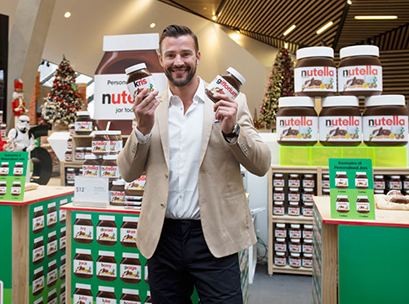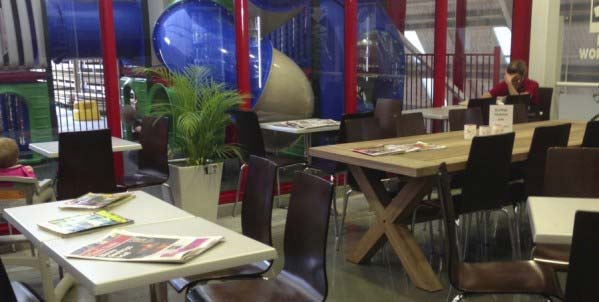 Ahead of Inside Retail Academy’s event, Managing Marketing in a Multichannel Retail Environment, Inside Retail chats with Dr Violet Lazarevic, a senior research consultant at the ACRS, Monash Business School, about using technology to create theatre instore.
Ahead of Inside Retail Academy’s event, Managing Marketing in a Multichannel Retail Environment, Inside Retail chats with Dr Violet Lazarevic, a senior research consultant at the ACRS, Monash Business School, about using technology to create theatre instore.
Inside Retail: What does theatre have to do with enhancing the retail environment?
Violet Lazarevic: Many retailers are adopting ‘retail theatre’ in their physical stores which means they are reinventing the physical retail store to focus on experience. Adopting a retail theatre perspective means the store and its design and layout is all about satisfying customer needs, and inspiring the customer to come back. In other words, giving the customer a reason to come to the physical store rather than just shopping online.
This is a fundamental shift away from focusing on the store as a place to just sell product to a focus on getting customers to want to be in the store, to be excited by the store and have positive brand interactions that ultimately tell the brand story.
IR: ACRS does considerable research here and globally, what does instore theatre look like in different locations of the world?
VL: ACRS travels around the world and we have seen some great examples of retail theatre instore. It’s not so much about the geographic location of stores or retailers driving a different approach to instore theatre, it’s more about the category that the retailer competes in, their size and their brand stories. It’s critical that the instore theatre element employed matches the category. For example, many retailers have incorporated cafes or food offerings into their retail environment. But a cookie-cutter approach where a café is just added in doesn’t work, the café or food offer needs to be aligned with the retailers offering and embedded into the experience. There needs to be value for the customer embedded within that retail theatre offering. For example, Bunnings Warehouse here in Australia has placed their cafés near the playgrounds in their stores which emphasises the family focus of the brand. The Bunnings café is also designed and stylised to also represent the hardware and home improvement category that Bunnings competes in.
The retailer also needs to play to their strengths in terms of their size. If it is a large format retailer than several instore theatre elements can be adopted, or a larger element of theatre can be adopted. Smaller format retailers need to use their small size and have more interactive retail theatre so it’s not about being big and flashy but rather about being more intimate and personal.

IR: What can retailers learn from e-commerce theatre to translate into bricks and mortar retail?
VL: E-commerce is very good at interactive content. Bricks and mortar retailers often rely on more passive ways of communicating with customers outside of their sales people. Bricks and mortar retailers can make use of exciting interactive content via technology in the store to bring the brand to life and bring the products to life for the customer.
E-commerce is also very good at personalisation, because of the vast amount of data that they get from customers. It is harder for bricks and mortar retailers to emulate this on a large scale but they can offer smaller ‘theatre’ elements instore that allow for personalisation. For example, Myer is offering a Nutella jar that can have your name on it this Christmas. This is a smaller scale personalisation and offers interactivity between the customer, the brand of Myer, the brand of Nutella, as well as Myer’s sales people.
IR: How can investing in new technology enhance customers experience?
VL: Technology within the physical store can really help to bring an element of theatre and entertainment to the store. It is not about technology for technologies sake, customers will not appreciate this. Rather it is about embedding technology in a way that it enhances the experience. The technology decisions need to be aligned with the retailer’s strategy and with their brand promise. For example, a retailer who adopts a lowest price strategy or a no-frills strategy would be perceived as wasteful if it suddenly adopted flashy, big and expensive technology instore.
Technology can enhance interactivity and it can create excitement in the store. This is true regardless of the size of technology. Even mobile apps on the customer’s own smartphone can bring retail theatre instore if done correctly.
IR: Monash Business School and ACRS has offered the ACRS Retail Trends report (valued at $250) for every Inside Retail Academy Early Bird ticket purchase, what can people expect to learn from this report?
VL: The ACRS Retail Trends report is a monthly analysis of the latest and historical ABS retail trade data by category and by state and also looks at the NAP online sales index. This provides retailers with information about how the industry is going and changes occurring in different retail categories. Retailers can use this information to contextualise their own financial performance within the broader industry and within their retail categories. Having trend information available also assists retailers in planning, for example, a negative trend in their category may be a red flag to retailers to try different strategies to improve sales in that category or change their resource models to resource-up or resource-down accordingly.
The ‘Managing Marketing in a Multichannel Retail Environment’ events take place at The Sheraton Melbourne on Tuesday February 23, and The Sheraton Sydney on Wednesday February 24, 2016.
Early bird tickets are now available for purchase. For more information click here or email cath@octomedia.com.au.





